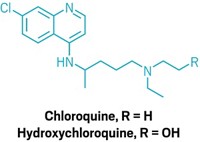Advertisement
Grab your lab coat. Let's get started
Welcome!
Welcome!
Create an account below to get 6 C&EN articles per month, receive newsletters and more - all free.
It seems this is your first time logging in online. Please enter the following information to continue.
As an ACS member you automatically get access to this site. All we need is few more details to create your reading experience.
Not you? Sign in with a different account.
Not you? Sign in with a different account.
ERROR 1
ERROR 1
ERROR 2
ERROR 2
ERROR 2
ERROR 2
ERROR 2
Password and Confirm password must match.
If you have an ACS member number, please enter it here so we can link this account to your membership. (optional)
ERROR 2
ACS values your privacy. By submitting your information, you are gaining access to C&EN and subscribing to our weekly newsletter. We use the information you provide to make your reading experience better, and we will never sell your data to third party members.
Support nonprofit science journalism
C&EN has made this story and all of its coverage of the coronavirus epidemic freely available during the outbreak to keep the public informed. To support us:
Donate Join Subscribe
Natural Products
Covid-19
What is oleandrin, the compound touted as a possible COVID-19 treatment?
Scientists warn that the botanical natural product is unproven and could have lethal side effects
by Bethany Halford
August 20, 2020

Recent news that US President Donald J. Trump has expressed interest in researchers investigating oleandrin as a possible COVID-19 treatment has scientists raising alarms that the compound is unproven and has dangerous, potentially lethal side effects. So what is oleandrin and what do we know about it?

Oleandrin is a sugar-containing compound found in Nerium oleander, a shrub that’s popular for landscaping in the southern US and elsewhere. The plant is poisonous, causing nausea, vomiting, irregular heartbeat, and in some cases death when consumed.
“Most people who have grown up around this plant have been told since childhood, ‘Don’t eat this plant. It will kill you,’” says Cassandra L. Quave, a medical ethnobotanist at Emory University.
Oleandrin accounts for much of N. oleander’s toxicity, and it’s in every part of the plant from root to flower. Animals and people have died from eating the plant. Reports of poisonings resulting from the use of twigs from the plants to roast food date back to the 1800s, although more recent tales about deadly feasts of hot dogs roasted on oleander twigs have been debunked. A case report from 2006 details how two people suffered oleandrin poisoning after dining on homemade snail stew (J. Anal. Toxicol. 2006, DOI: 10.1093/jat/30.9.683). The snails had been found near N. oleander plants in their garden and analysis of the frozen leftover snails revealed they contained oleandrin, which the snails probably took in when their slime mingled with the plant’s juices.
Oleandrin inhibits the action of sodium and potassium pumps in heart tissue, which are involved in the electrical signaling responsible for heart-muscle contractions. Sodium and potassium pumps also control the water balance in cells, which is why people with oleandrin poisoning experience nausea and diarrhea, adds Justin Brower, a forensic toxicologist who writes the Nature’s Poisons blog about toxic natural products and is working on a book by the same name.
Quave and Brower point out that oleandrin is structurally similar to digoxin, a cardiac glycoside used to treat various cardiac conditions. But they note that digoxin has a narrow therapeutic window—the dose required for it to be an effective treatment is close to the dose that makes it toxic.
The US Food and Drug Administration has not approved oleandrin or experimental N. oleander extracts, such as Anvirzel or PBI-05204, for the treatment of any disease. Oleandrin and N. oleander extracts have been studied as potential treatments for cancer and as antivirals. In July, a preprint published on bioRxiv claimed that oleandrin can stop SARS-CoV-2, the virus that causes COVID-19, from replicating in cells in a test tube (2020, DOI: 10.1101/2020.07.15.203489). The paper has not yet been vetted by other scientists.
Robert Harrod, a virologist at Southern Methodist University, has studied oleandrin’s ability to block human T-cell leukemia virus, type 1, a retrovirus that causes a fatal blood cancer, from spreading to other cells in test tubes (J. Antivir. Antiretrovir. 2019, DOI: 10.35248/1948-5964.19.11.184). He says oleandrin probably does this by blocking cells from binding to the virus’s glycoprotein spike—a process he says could be general for envelope viruses, including SARS-CoV-2.
He notes that there’s a lot more research needed to go from the preprint to giving oleandrin to people, including tests in human cells, animal models, and early clinical trials. “Even if it does make it into treatment of coronavirus as a therapeutic, this is going to have to be monitored very closely by doctors,” Harrod says. “It is a very dangerous compound.” Even so, he’s not willing to dismiss the idea. “We should wait and look at the data before making a decision,” he says.
Because of the recent hype around oleandrin, Emory’s Quave worries that people might try to self-treat with N. oleander. “Don’t consume or smoke this plant or consume any oleandrin,” she warns.





Join the conversation
Contact the reporter
Submit a Letter to the Editor for publication
Engage with us on Twitter